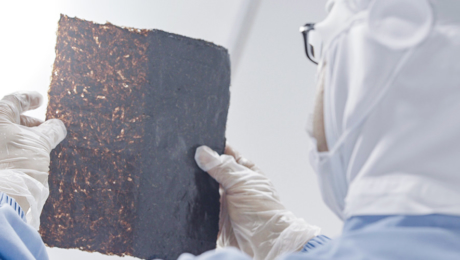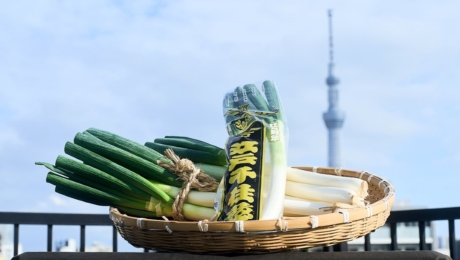
Chic Edo-style paulownia box for holding delicious nori
2019.12.18
FOODNori (dried seaweed) is indispensable for Japanese meals. As represented by onigiri (Japanese rice balls), nori has a strong image of going together with rice for Japanese people, but at soba noodle shops, a staple of Edo food culture, it was loved as the “nibbles for when drinking sake.”
Placing charcoal in a wooden box called a hoiro in which the roasted nori is warmed, the nori is then dipped in soy sauce mixed with wasabi and eaten while sipping on Japanese sake, and then finished up by eating a plate of buckwheat noodles: this is the way how chic Edoites enjoyed eating soba noodles.

The Roasted Nori Box sold by Yamamoto Nori Honten since 2019 allows you to enjoy the “Chic Edoites way” in your own home. Just place charcoal in the wooden box, place the roastednori on the inner lid, put the box lid on top, and then wait 5 minutes to enjoy the flavorful taste of the warmed nori.
“Delicious nori as defined by Yamamoto Nori is full of flavor from the moment it enters your mouth. Warming it in the roasted nori box improves the way dissolves in your mouth; making it easier to enjoy the flavor,” explains Takahiro Yamamoto, the Yamamoto Nori Shop young master who produces the roasted nori box.

The Paulownia boxes are handmade one at a time by craftsmen, On the side of the box, the shape of maruume, which refers to plum blossoms in Japanese, is engraved as the trademark of the Yamamoto Nori Shop, and the lid is printed with a scene of a riverside fish market at Nihonbashi in Tokyo, taken from the A Hundred Views of Mt. Fuji woodblock print series produced by Katsushika Hokusai, one of the most famous Japanese ukiyo-e painters.
Edo cuisine developed together with the “extra effort” taken by Edoites who wanted to eat something delicious when they had a little time to spare while working busily at the riverside fish market. The roasted nori being slowly warmed in this Paulownia box brings back the spirit of that chic Edo.







